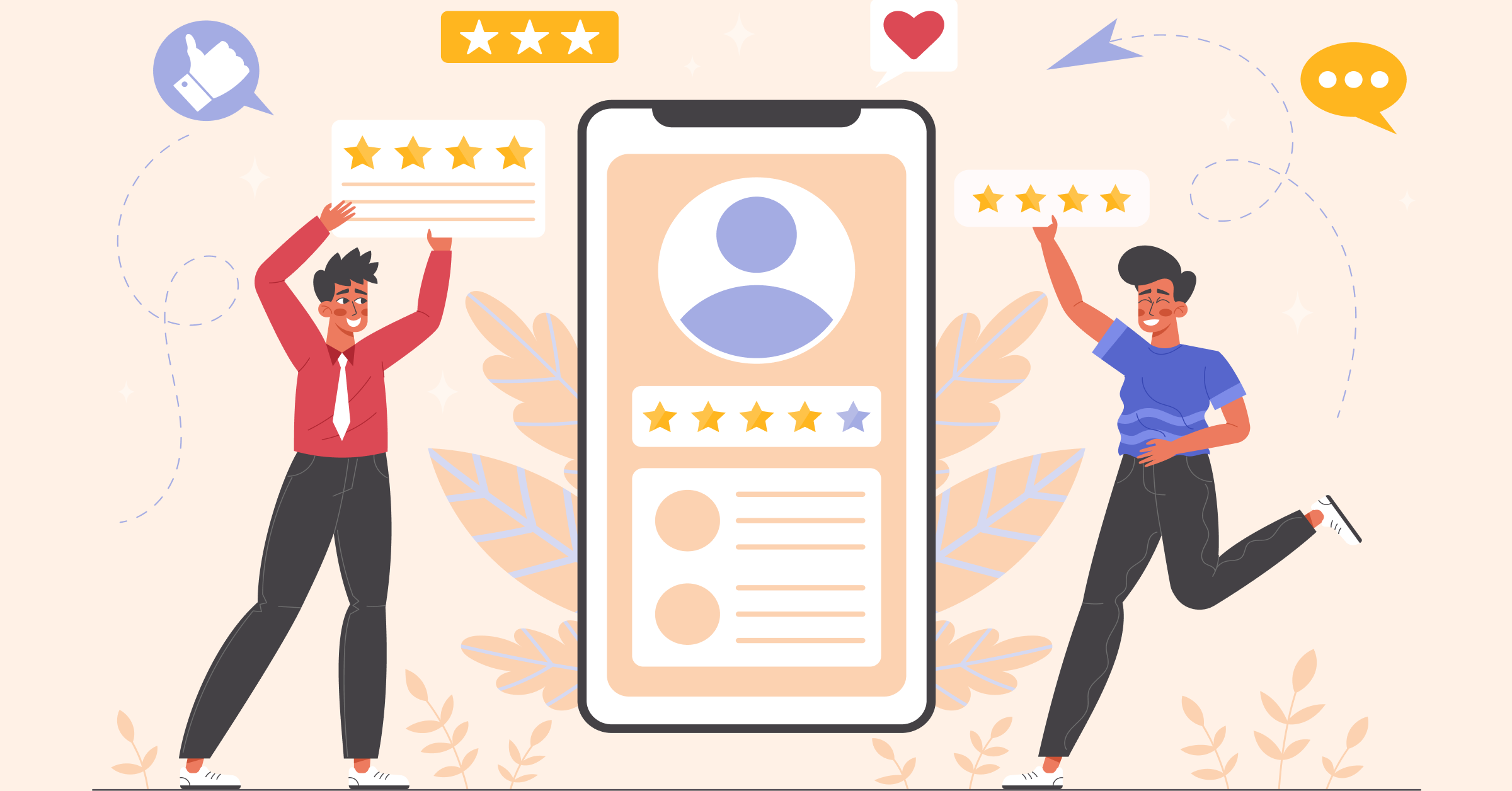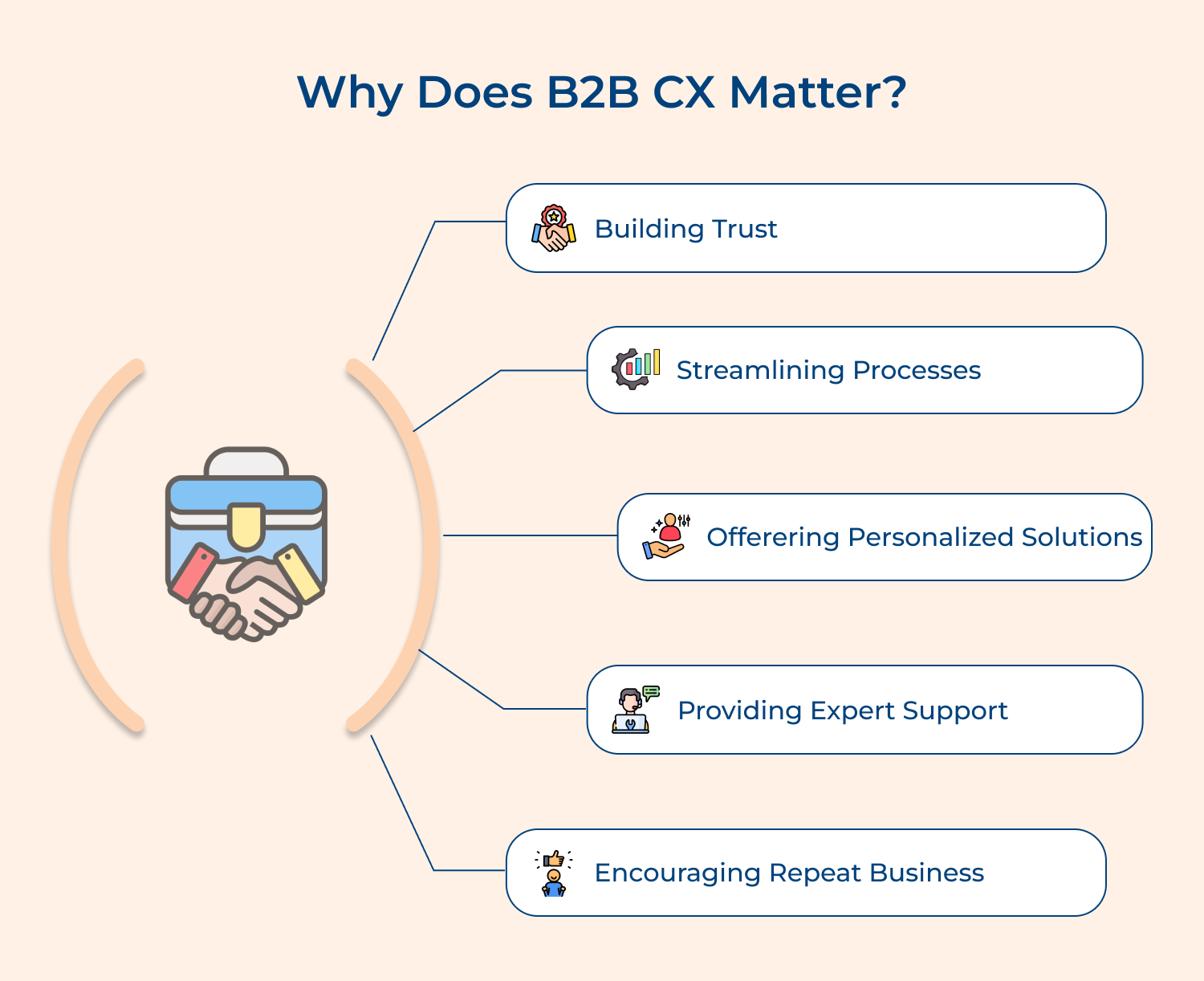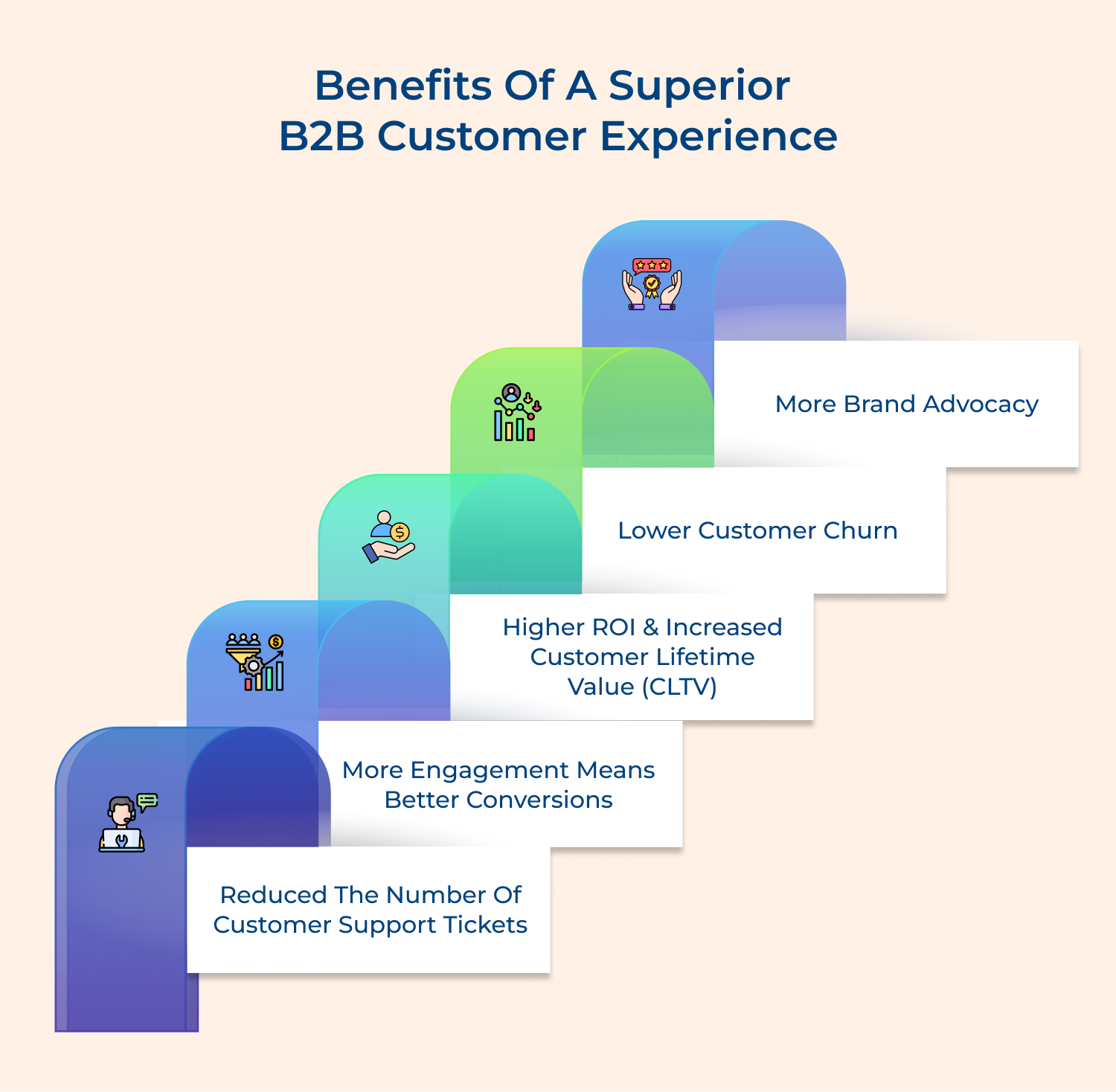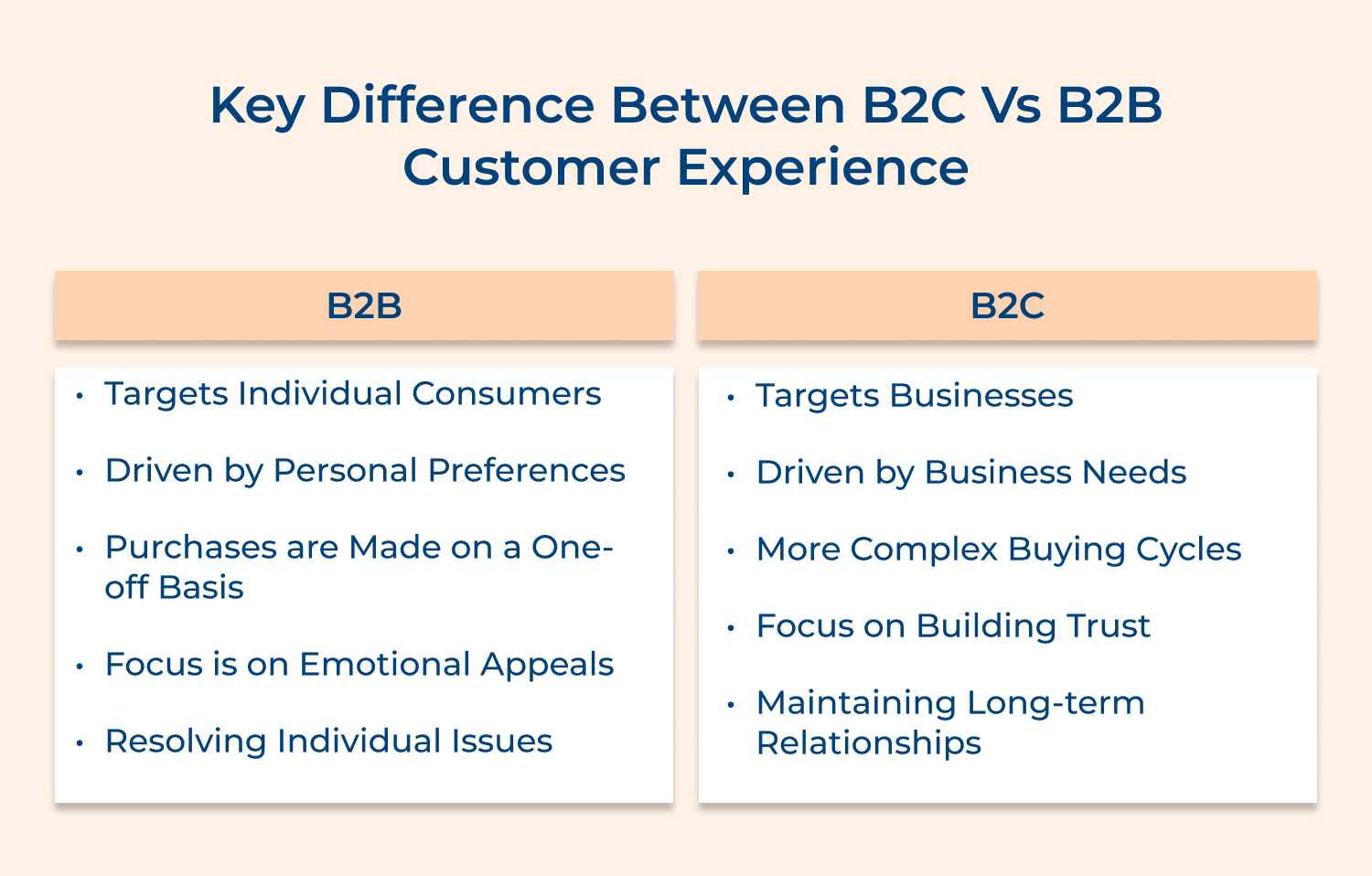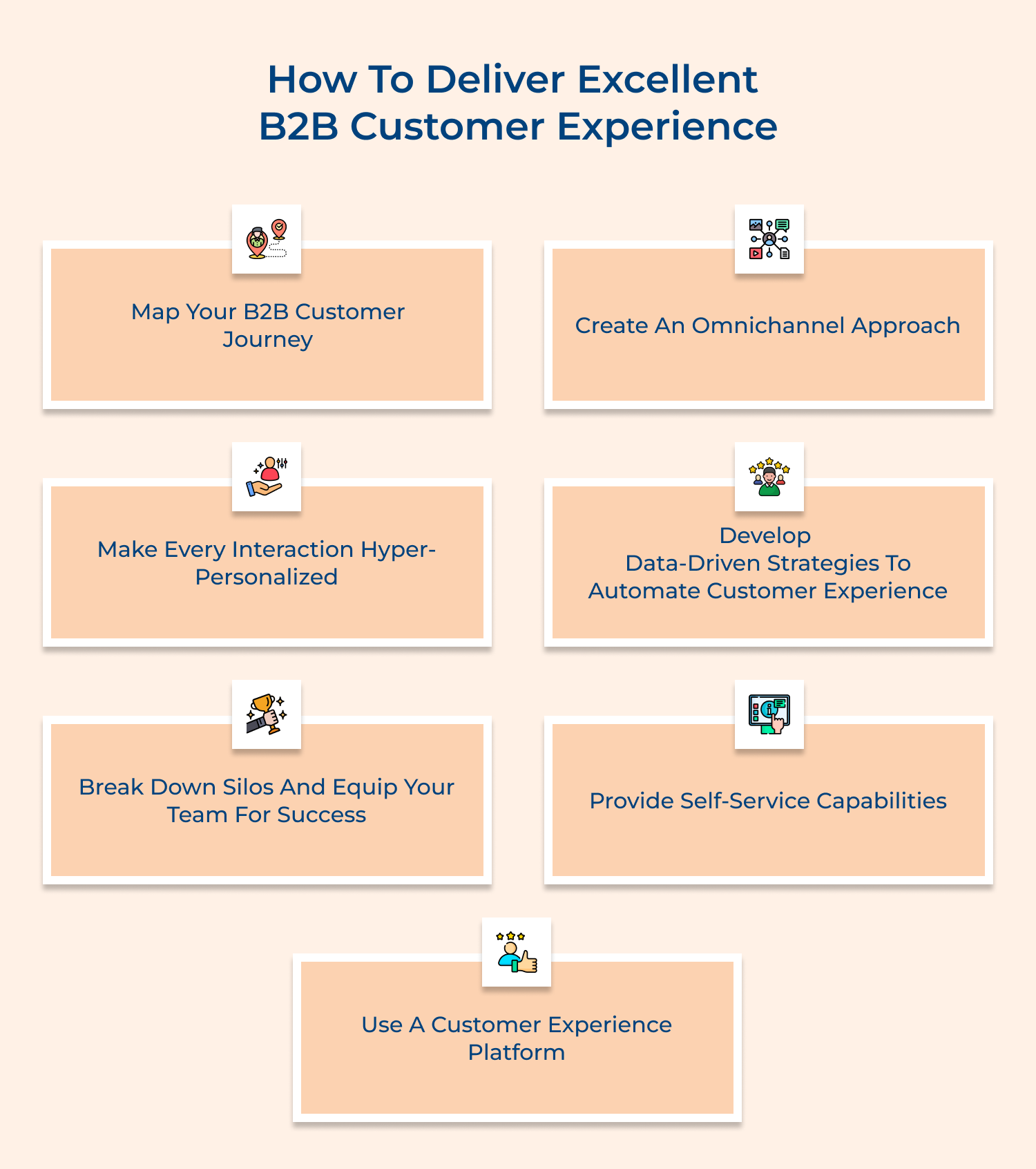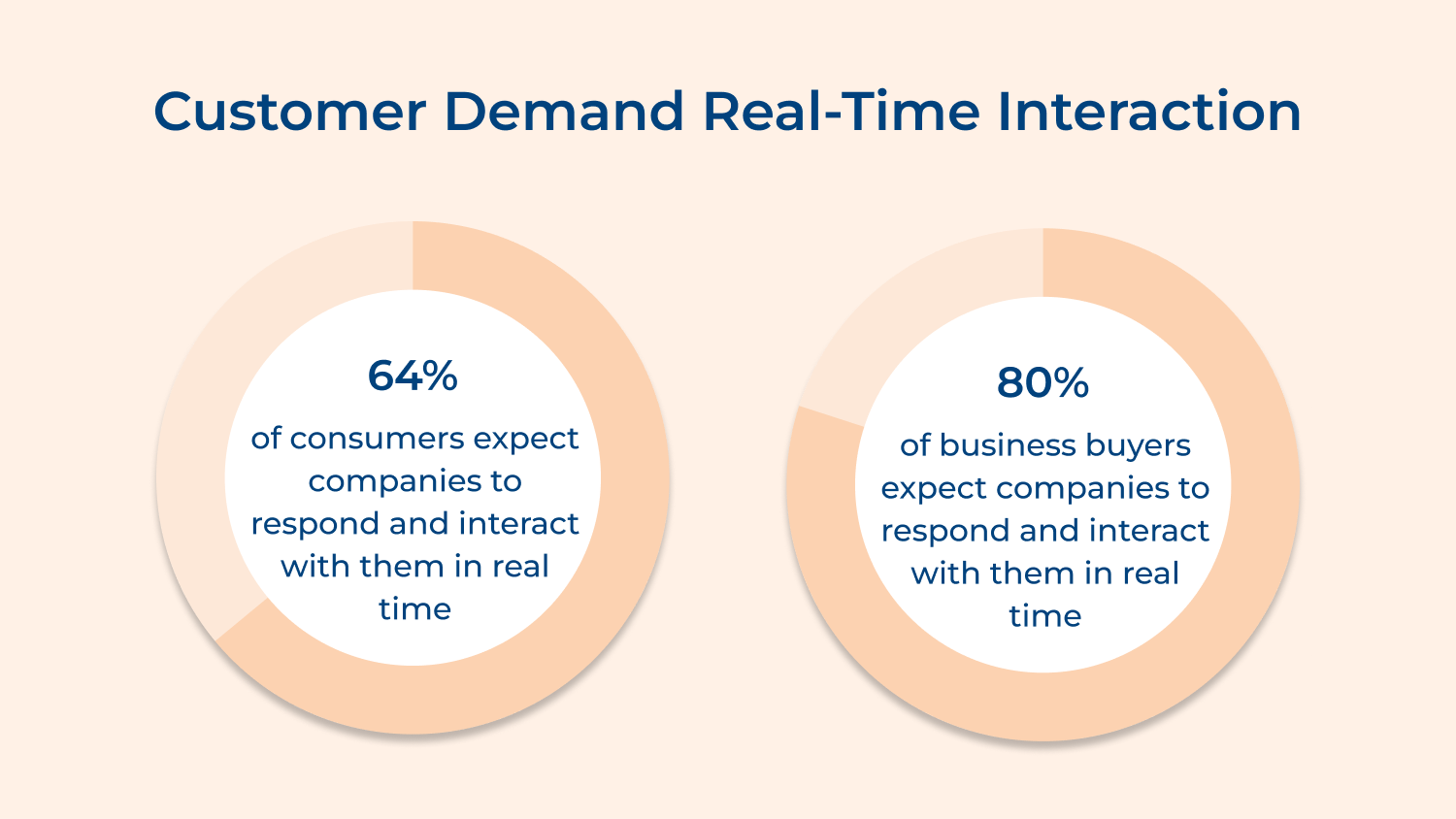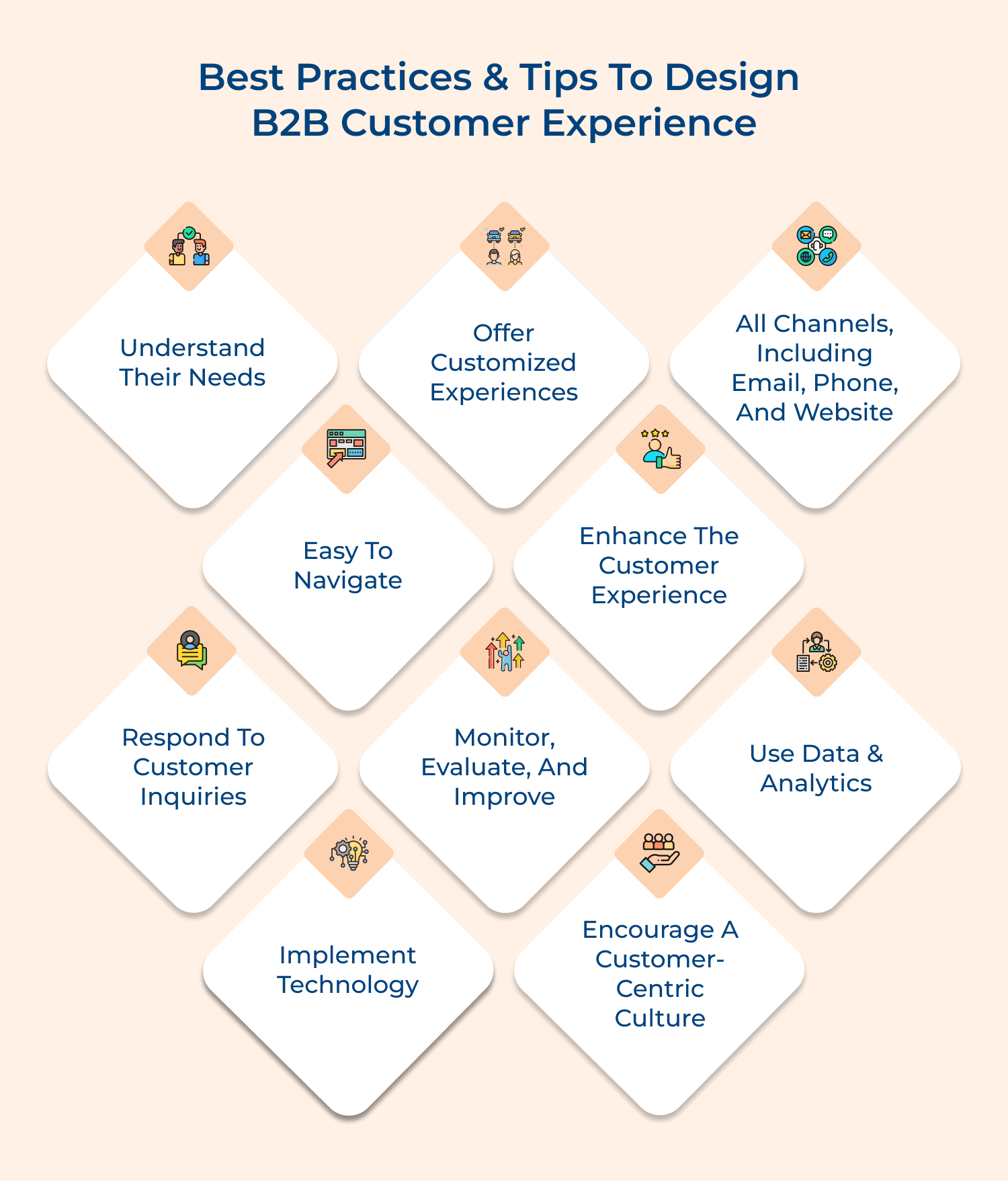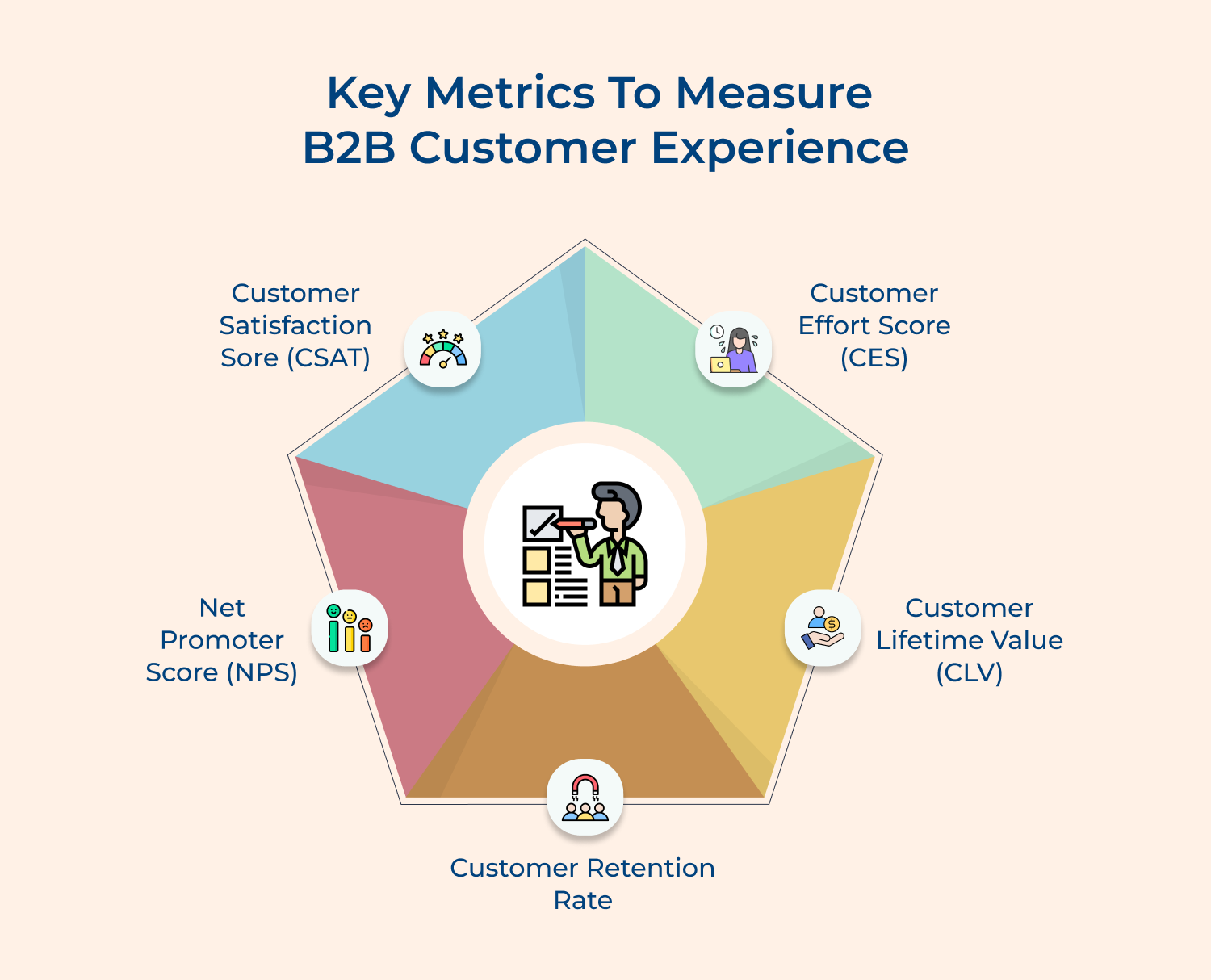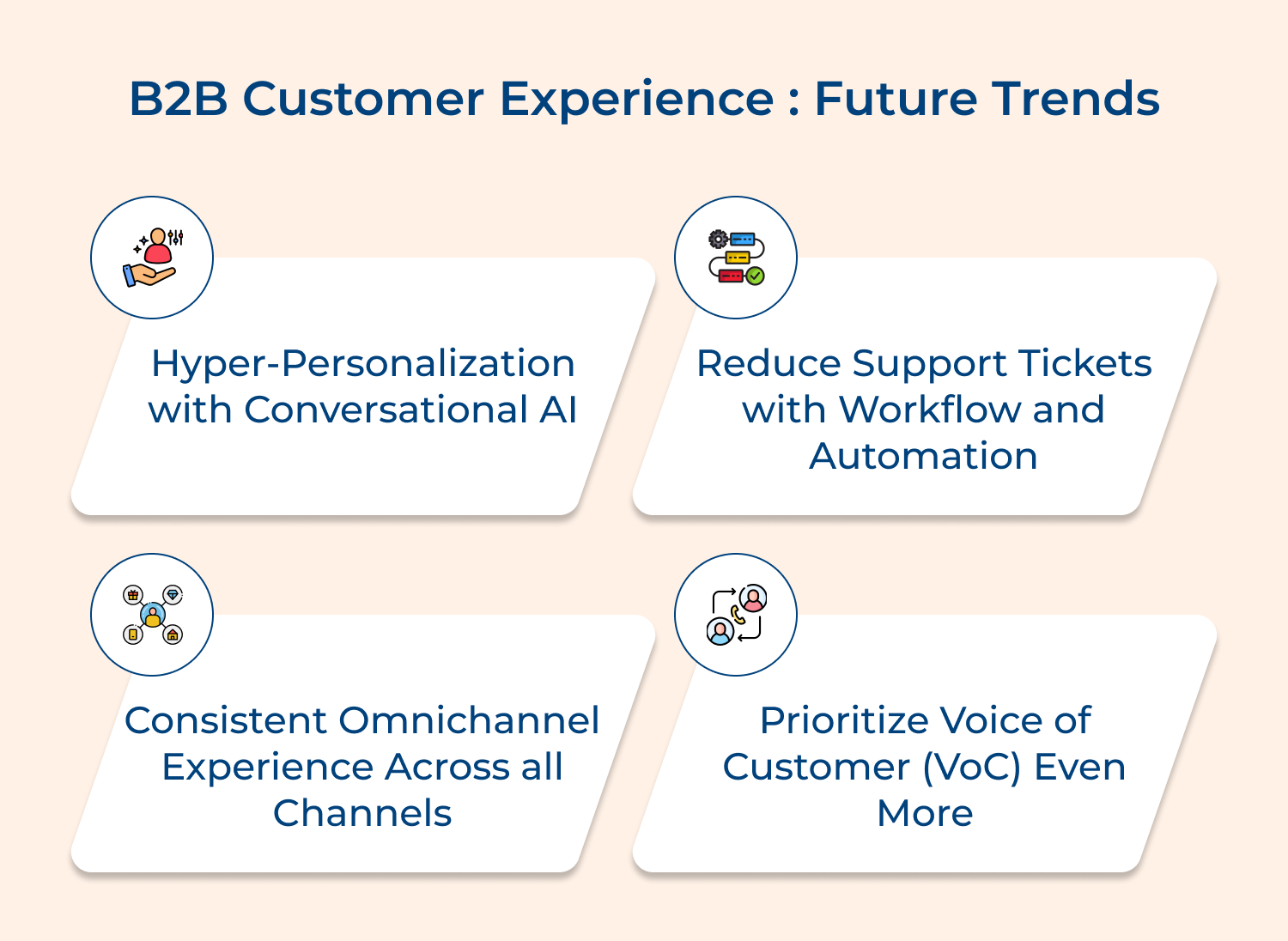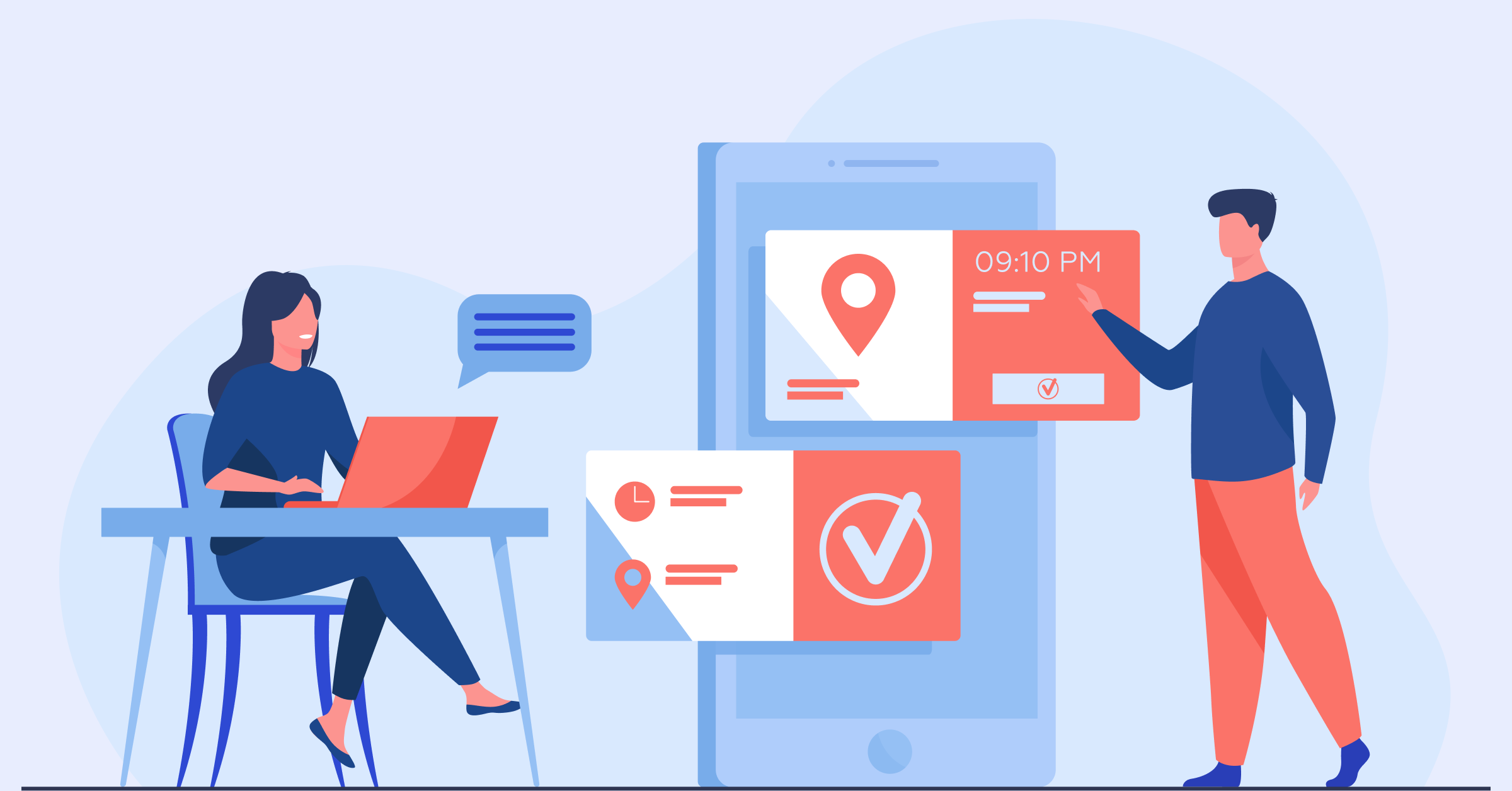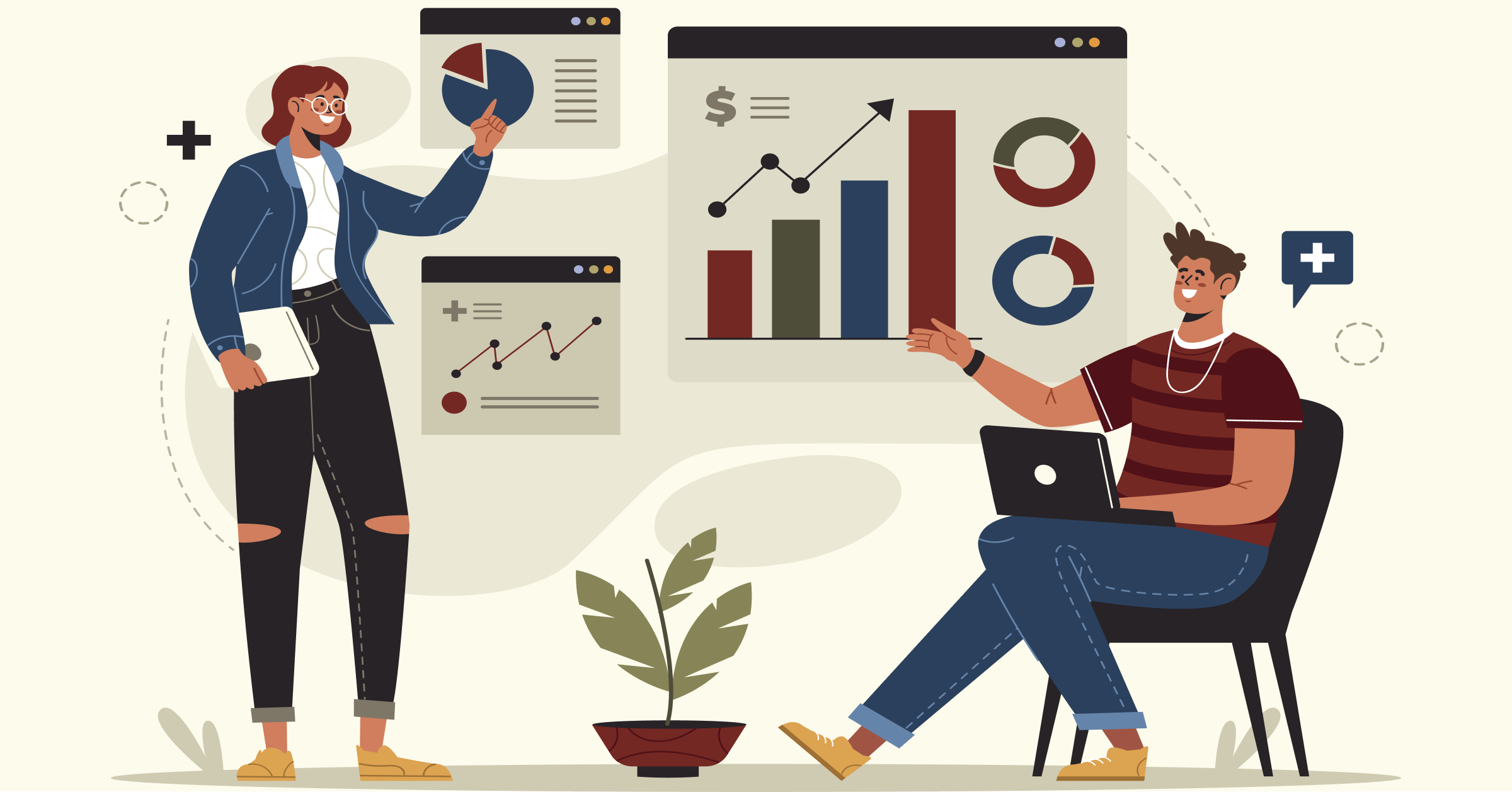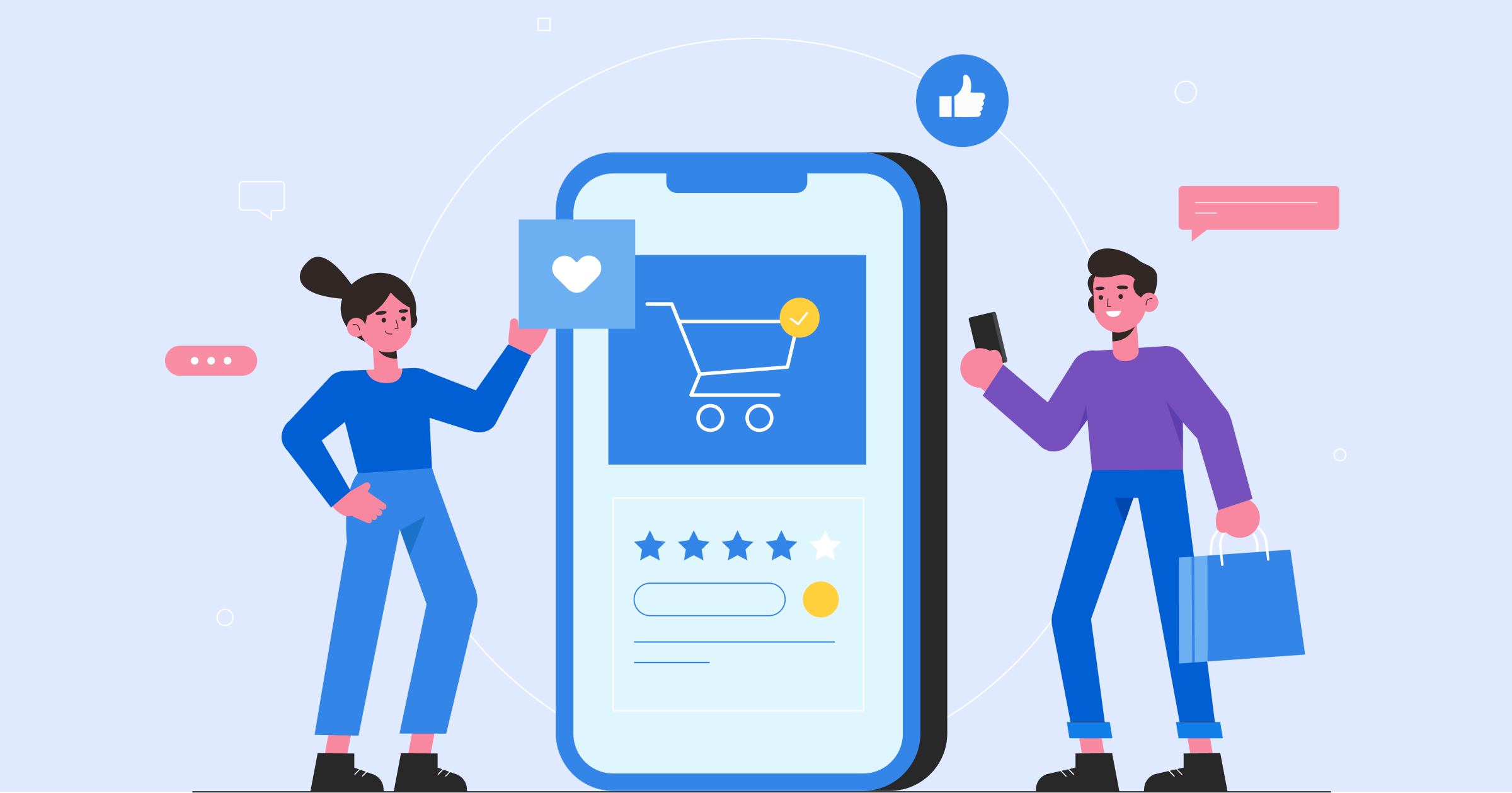Here are the key metrics that can be used to grasp the quality of experiences you’re delivering:
- Customer satisfaction score (CSAT): CSAT is a very good tool if you want to measure if a customer is satisfied with one-time interaction. It is most often used in customer service.
- Net promoter score (NPS): NPS consists of only two questions – it gives that one customer experience-related number your leadership needs for target setting and bonuses. NPS is often used to rate a brand, service, or product in general.
- Customer effort score (CES): Customer Effort Score is the most popular customer experience metric that involves the customer’s input. CES typically answers “How easy was it to solve your problem today?” and has a 5- or 7-point scale system
- Customer lifetime value (CLV): Customer Lifetime Value (CLV) is a prediction of the net profit attributed to the entire future relationship with a customer.
- Customer retention rate: Customer retention rate is the measurement of how a business retains customers over a specific period. The metric is highly connected to the churn rate: the higher the retention is, the lower the churn rate will be.
All the above-mentioned metrics are customer-focused as business-to-business customer experience resolves around customers.
B2B Customer Experience Examples
A well-designed strategy is a vital element of customer experience initiatives. It has been identified that the top emerging customer engagement trends will have the biggest impact on your CX. If your business wants to improve customer engagement the latest customer experience technology trends can help your strategic plans to leverage.
1. Customer-Centric & Personalized Experiences
Modern customers expect personalized and more human experiences with more options than ever. They want to be treated like you value them and understand their needs, pain points, and expectations and put yourself in their shoes before offering service.
It will prove that you are so much obsessed with your customers and go the extra mile to deliver personalized support that will convert into a delightful experience. A scalable customer service model helps ensure customer retention while boosting customer lifetime value (CLV).
Uber is an excellent B2B customer experience example. It shows exactly what you need to do to provide an outstanding customer experience. The Uber managers identified all the pain points people faced while hailing a cab. They eliminated the anticipation while waiting for the cab.
2. Self-Service Options
Customers expect their issues to be resolved as fast as possible. Offering self-serve options is a great way of handling customer’s patience. It has the power to resolve the issue in real time without connecting with the support executive.
According to Gartner, almost 43% of B2B customers would prefer to not interact with a sales representative at all.
For example:
- Providing a detailed knowledge base (or repository of information, including how-to guides and videos) can aid customers who want to manage things themselves.
- Having a chatbot that can direct customers to the relevant documents can help to reduce friction and provide value.
Hence, having an effective and well-designed self-service option can help customers to get what they need for a better experience.
Apple support is well known for its self-service game. For starters, their support page opens with an integrated search tool and personalized flow options for customers to click through based on their questions. They offer even more resources like a link to their support community, their YouTube channel that offers educational videos and their Twitter handle, which also offers
helpful tips .
3. Quicker Response Times & 24/7 Customer Service
The consumer shift to multi-channel digital tools reflects their expectation of urgency and for improved accessibility to customer service.
AI and automation have made it possible for companies to meet customers’ expectations in terms of providing instant resolutions to their issues – and on their preferred channel. With the rise of remote and hybrid work, many B2B customer service requests come outside of regular business hours.
Archer is a tech-driven financial services company that streamlines operational processes for brokers, so they can focus on investments. Archer deployed the digital channel to deliver excellent service and quick results for their clients. The team was able to automate ticket analysis and routing freeing agents to focus on more important aspects of their work.
4. The Right Channel for the Right Experience
Customers are looking for experiences that reflect their changing needs. Research by A.T. Kearney shows that companies with well-developed digital platforms that make the best use of technology and automation generate an average of 8.1% revenue growth per year.
It requires brands to offer the right channel for the right experience, rather than offering limited channels for all points in the customer journey. For example: Some customers may prefer to communicate via email, while others are more comfortable sending text messages or Tweets.
The brands that succeed are those that take into account the preferences of their customers and provide the appropriate mediums.
B2B Customer Experience: Future Trends
If customers aren’t happy, they won’t stick around for long. Luckily, businesses are starting to focus more on CX by embracing some really exciting trends emerging, such as:
